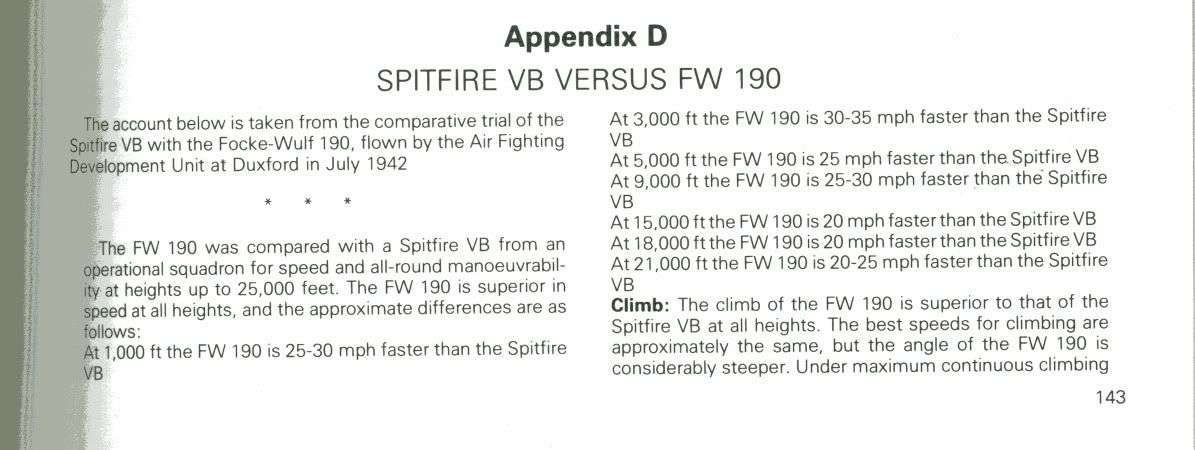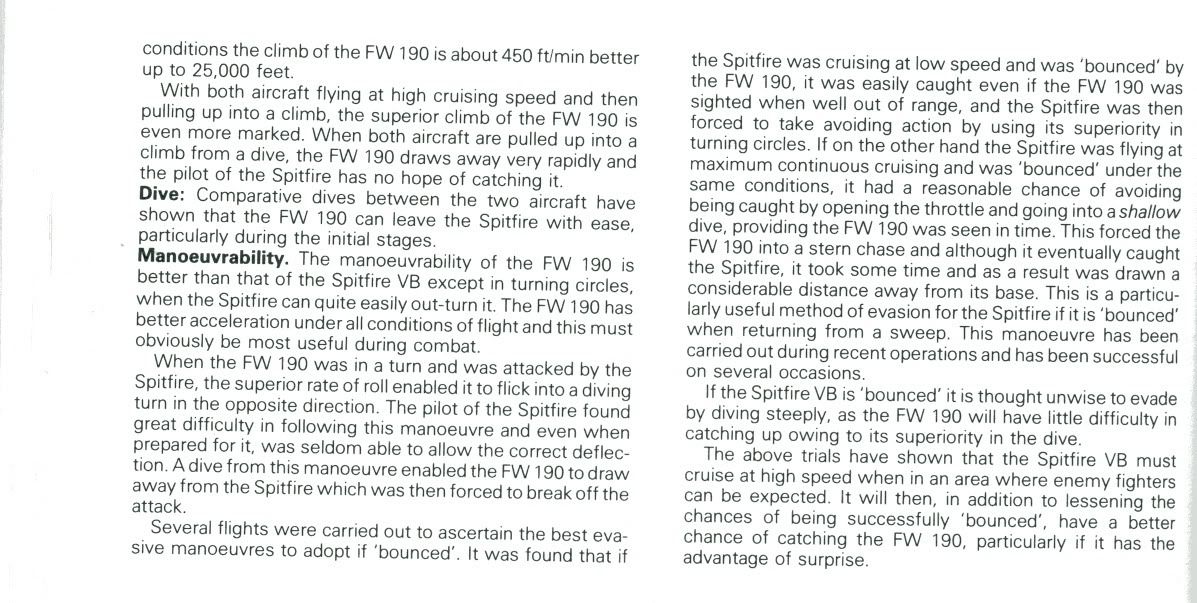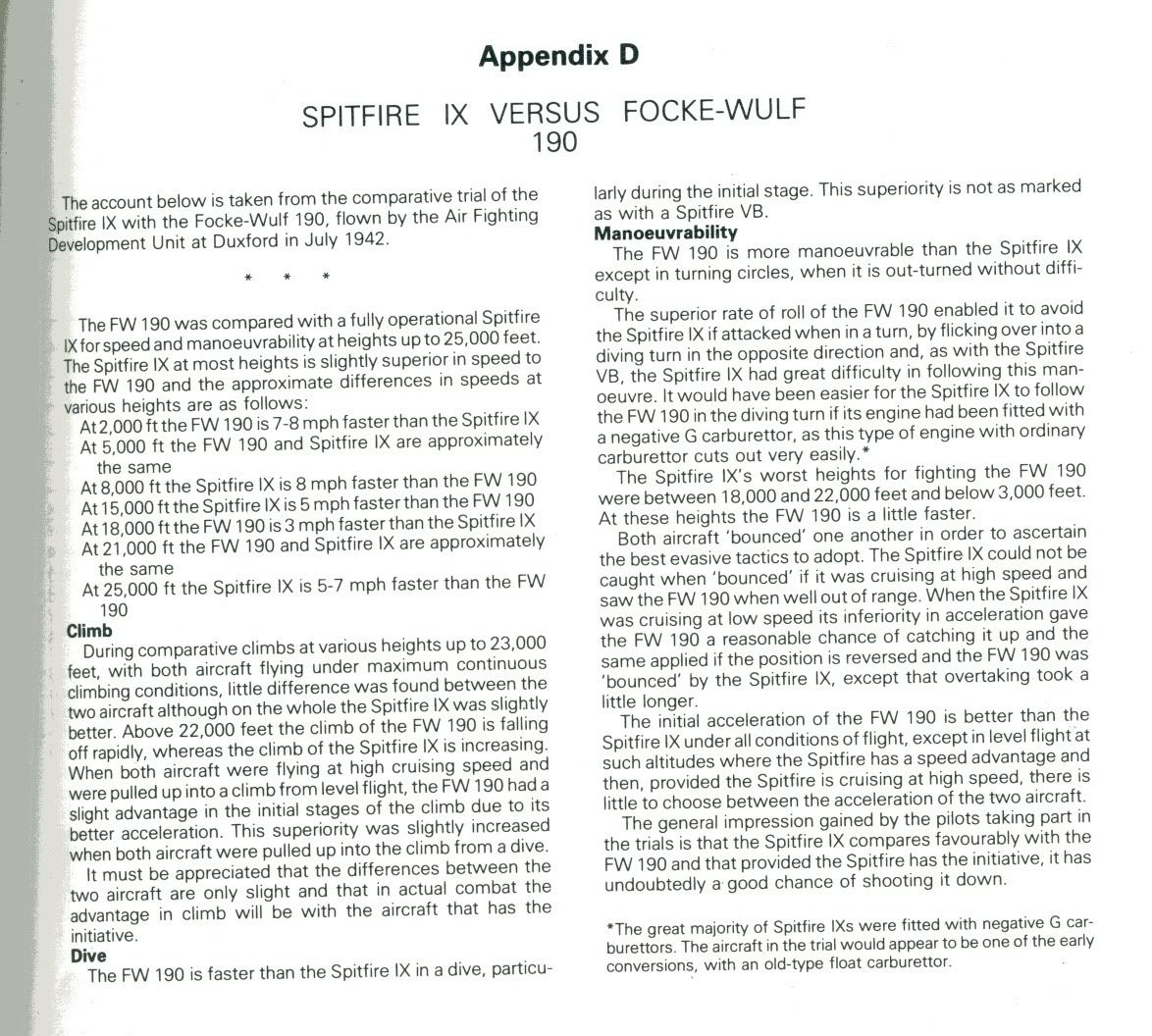
 |
|
#111
|
|||
|
|||
|
Quote:
My understanding is that the Thunderbolt was pretty aerodynamic and that it had surprisingly low drag for its size. It was however, a big heavy sucker with inefficient props (the paddleblades aren't modeled on the razorback Jugs), so I kind of expected that its acceleration would be less than spectacular, especially at these altitudes. However the Mustang, which is a fairly heavy aircraft when you consider the horsepower of the V-1650 (even with the fuselage tank empty), doesn't seem to suffer for it nearly as much as the Corsair at the far end of its performance curve, so that's where I assume the drag coefficient comes in. I'm going to try to quit complaining about the unrealistic trim demands so much, because the Hellcat, the P-47, the Focke-Wulf and even the Zero have it worse. The FW 190A, though, was supposed to be much quicker off the mark even than most models of the Spitfire V, so I really don't know where to assign the blame for that. Someone in an earlier post suggested E-bleed is what is hamstringing these supposedly high-performance aircraft, and that's as good a place as any to start. Most of the victims of this issue appear to have had what was described at the time as 'sensitive' trim tabs or trim controls; the aircraft was described as easy to trim because the trim adjustments were relatively minor as speed or power changed, and the tabs were often described as 'effective'. What I have been finding is that most of the needed adjustments are too small to use button trim--you either go way over or way under with that last click; the happy medium leaves you either pushing your stick forward or pulling it back 5-10 degrees, which is not the best way to squeeze that last 6-8 kph out of your aircraft by keeping her absolutely level. I've tried switching to trim both on a throttle quadrant and on the Saitek X52 throttle (I just couldn't abide that stick, though, so I either use my CH Combatstick or my son's Thrustmaster T.1600). In either case, the increments you have to apply are teeny-wheeny tiny, especially in the elevator trim. I sometimes think that blowing on the damned things can have a measurable effect on my angle of attack at higher speeds. I have tried a variety of curves, but mostly what happens is that the transition point between 43 and 60 is located just where I needed an extra tiny adjustment. What confuses me is that if you actually watch your rudder or elevators from outside the cockpit as you apply trim by button while parked on the ground, it takes about 80 clicks from a neutral position to the maximum in each direction (80 clicks up, 80 clicks down; same with rudder left/right trim). The animation shows no visible movement for four or five clicks (depending on where you are in the motion range), but I am taking it on faith that the single click has some effect when we are 'flying'; if you watch the vector ball in Wonder Woman view, a single click of rudder trim always has a visible effect, so I'm assuming that the elevator trim works the same way, even though it's harder to detect or measure via the vector ball method. You'd think that 160 clicks of range of adjustment on each control surface would confer a little more precision... cheers horseback |
|
#112
|
|||
|
|||
|
Quote:
I, too, have the impression that a single click has some effect, but I, too, find that I go way over or way under with the last click. Nevertheless, I'm a bit perplexed, for Devicelink reports trim settings only with the first decimals via UDPSpeed. So what you see is 0,0,0,0,0;0.1,0.1,0.1,0.1,0,1;0.2,0.2,0.2,0.2, etc. In theory, one click should have a value of 0.02, but it's unclear whether only it's display is truncated, or the higher precision value is roughly neglected/rounded up (this latter would explain the 'way over or way under' experience and the precision issues). Anyway, it would be great if TD could clarify this point. |
|
#113
|
|||
|
|||
|
Quote:
What would be nice to have for trim would be a coarse and a fine setting combined with a finer gradation, coarse trim could be what we have now and one click of fine trim would be one fifth or one tenth of one click coarse trim. |
|
#114
|
|||
|
|||
|
Quote:
As to the oscillation thing, I find that many planes are impossible to trim perfectly, what sometimes makes me mad. But I can't say whether it's realistic or not (and to what extent). I simply don't know what 'perfect trimming' means in real life in these planes. Only an r/l pilot who has flown them could give us an idea of that. We have discussed these trim problems and their possible solution not long ago here: |
|
#115
|
|||
|
|||
|
The acceleration of the 190 is probably too poor ingame. Reports from wwiiaircraftperformance.org confirm this:
Navy test, Fw-190A5 vs. F6F-3 vs. F4U-1 "Relative accelerations, for all speed over 160 knots, showed both the F4U-1 and Fw-190 to be slightly superior to the F6F-3 and showed the F4U-1 to be slightly superior to the Fw-190 up to 15.000 feet, above which altitude, the Fw-190 had a slight advantage. At speeds less than 160 knots the F6F-3 and Fw-190 were equal." http://www.wwiiaircraftperformance.o...0/ptr-1107.pdf Another report, again Fw-190A5 ..."The run is short as the aircraft accelarates rapidly"... ..."Airspeed acceleration after take-off is noticeably good"... http://www.wwiiaircraftperformance.o...-47-1658-D.pdf According to these, the 190 had good acceleration. Ingame, its mediocre at best. |
|
#116
|
||||
|
||||
|
I am also of the opinion that the Fw acceleration is worse than it should be (although much better since 4.11), plus its climb angle at least compared to Spits.
British tests of an A3 vs MkV and MkIX spits.   
Last edited by fruitbat; 05-29-2013 at 06:10 PM. |
|
#117
|
|||
|
|||
|
Quote:
Quote:
Edit: The problem with those reports is mainly that there is no hard data. "slightly superior" in horizontal acceleration could very well mean "After one minute the Corsair is 20 kph faster than the Fw190" or "After one minute the Corsair is 2 kph faster than the Fw190" Last edited by majorfailure; 05-29-2013 at 06:58 PM. |
|
#118
|
|||
|
|||
|
Quote:
It seems to me that there should be some compromise between the "instant trimming" you get from the "trim on a slider" cheat and historical rates of response for using trim to improve turn performance. |
|
#119
|
|||
|
|||
|
Quote:
Right, but my question is how much constant stick and pedal correction was needed to keep a 'perfectly trimmed' plane straight and level (horseback's original problem). In Il-2, the needed input varies from plane to plane, as it may have varied in r/l, but the question is how these two relate and correspond. Last edited by sniperton; 05-30-2013 at 02:35 PM. |
|
#120
|
|||
|
|||
|
The problem with the trim delay for me is that you don’t see the effects until you have overdone it; logically, you would expect the pressure on the stick needed to keep the nose down to gradually be relieved as you kept pumping that nose down trim button, but that has not been my experience with most of the aircraft we all agree seem twitchy and trim sensitive. When the trim effects do actually arrive, it usually seems as though all of the cumulative trim inputs are applied at once, instead of being felt as they are being input.
Psychologically, while you’re waiting for the trim to take effect, you are wondering if the game sensed that last input, or that maybe that button has finally given up the ghost after 8-10 years of frantic trimming…to say the least, it is very unsatisfying. A couple of things come to mind: first, that I have no idea whether the trim delay time is exactly the same for every aircraft or if the trim is input in exactly the same degrees, minutes or seconds of the control surface’s arc every time, or how quickly I can input trim button pushes without the game deciding that I’m just holding the button down. Second, I don’t know if some aircraft’s trim inputs are given special treatment according to some arcane formula involving weight, speed attained and the current phase of the moon. Aircraft modeled like the Mustang require two or three clicks of elevator and/or rudder trim for every change of 10 kph or greater or any significant throttle increase, so if you're entering a dive or trying to speed up, the delay is constantly in play, and therefore unrealistic. The obvious answer to me is for the trim inputs to be noted on-screen in the same way changes in prop pitch or throttle are noted, and secondly to allow some means of accurately pre-setting your trim to the anticipated levels as you start your high speed run; a RL pilot obviously had a pretty good idea of how much nose down trim he would need if he was going to add 100-150kph to his IAS over the next 30 seconds or so, but in this sim, although some aircraft have the animated trim knobs and wheels, there seems to be little relationship between what you can see on the screen and the amount of trim you have actually applied. Since most aircraft do not have the animated trim knob and wheels, it seems to be a purely visual effect, and it would be a tremendous amount of work to provide accurate trim control animations for each aircraft in the directory. Being able to see that I have applied 23% nose down elevator trim or better yet, 3.5° right rudder trim after I punch the trim button or twist my trim rotary would be extremely useful. Currently, people have to spend several hours working with a given aircraft model to develop a feel for how much trim is needed for a given speed/situation, and the high-trim aircraft have a much steeper learning curve because it is not currently obvious in any way how much trim has been applied or in what direction, because when you have to apply a lot of trim at once, the stick never 'unloads'. It would improve everyone's piloting, I believe, and cut down on the "my ride is porked!" complaints if the players could track their trim and see what the effects of 6.8° of nose down trim does to their aircraft at speed X IAS. cheers horseback Last edited by horseback; 05-30-2013 at 06:53 PM. Reason: grammar |
 |
|
|